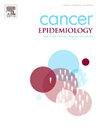Exposure to outdoor air pollution, wildfires, and cancer survival in the United States
IF 2.3
3区 医学
Q3 ONCOLOGY
引用次数: 0
Abstract
Background
Climate change has led to an increase in wildfires, a major source of air pollution, which may be particularly harmful to individuals diagnosed with cancer. The objective of this study was to examine the relationships of air pollution and wildfires with mortality risk among cancer survivors.
Methods
Surveillance, Epidemiology, and End Results (SEER) cancer registries provided information on 7,051,014 patients diagnosed with cancer from 2000 to 2021 in the United States. Cox regression was used to calculate adjusted hazard ratios (HRs) and 95 % confidence intervals (CIs) for the associations between exposures to particulate matter < 2.5 µm (PM2.5), nitrogen dioxide (NO2), ozone (O3), and wildfires (estimated using high-resolution geospatial datasets) with all-cause and cause-specific mortality risk.
Results
There were 3,452,593 deaths, including 2,369,364 from cancer, 525,409 from cardiopulmonary, and 557,820 from other causes. Among cancer survivors, higher exposure to PM2.5 and wildfires (but not NO2 or O3) were associated with increased risk for all-cause, cancer, and other mortality. The association between PM2.5 and cancer mortality was stronger in counties more heavily impacted by wildfires (HR per 10 μg/m3 in counties with ≥ median 0.39 wildfires per year: 1.17, 95 % CI 1.04–1.33) vs. no wildfires (HR 1.06, 95 % CI 0.97–1.15) (p interaction = 0.0064).
Conclusions
Among patients diagnosed with cancer, PM2.5 air pollution, particularly in areas heavily impacted by wildfires, is associated with increased risk for mortality.
暴露于室外空气污染,野火和癌症在美国的生存
气候变化导致野火增加,这是空气污染的主要来源,对癌症患者的危害可能特别大。这项研究的目的是研究空气污染和野火与癌症幸存者死亡风险的关系。方法:监测、流行病学和最终结果(SEER)癌症登记处提供了2000年至2021年在美国诊断为癌症的7,051,014例患者的信息。使用Cox回归计算调整后的风险比(hr)和95% %置信区间(ci),以确定暴露于颗粒物& 2.5 µm (PM2.5)、二氧化氮(NO2)、臭氧(O3)和野火(使用高分辨率地理空间数据集估计)与全因和病因特异性死亡风险之间的关联。结果共有3452593人死亡,其中2369364人死于癌症,525409人死于心肺,557820人死于其他原因。在癌症幸存者中,高暴露于PM2.5和野火(但不包括二氧化氮或臭氧)与全因、癌症和其他死亡率的风险增加有关。在受野火影响更严重的县,PM2.5与癌症死亡率之间的关联更强(每年野火中位数≥0.39的县每10 μg/m3的HR: 1.17, 95 % CI 1.04-1.33),而没有野火(HR 1.06, 95 % CI 0.97-1.15) (p交互作用= 0.0064)。在被诊断为癌症的患者中,PM2.5空气污染与死亡风险增加有关,特别是在受野火严重影响的地区。
本文章由计算机程序翻译,如有差异,请以英文原文为准。
求助全文
约1分钟内获得全文
求助全文
来源期刊

Cancer Epidemiology
医学-肿瘤学
CiteScore
4.50
自引率
3.80%
发文量
200
审稿时长
39 days
期刊介绍:
Cancer Epidemiology is dedicated to increasing understanding about cancer causes, prevention and control. The scope of the journal embraces all aspects of cancer epidemiology including:
• Descriptive epidemiology
• Studies of risk factors for disease initiation, development and prognosis
• Screening and early detection
• Prevention and control
• Methodological issues
The journal publishes original research articles (full length and short reports), systematic reviews and meta-analyses, editorials, commentaries and letters to the editor commenting on previously published research.
 求助内容:
求助内容: 应助结果提醒方式:
应助结果提醒方式:


